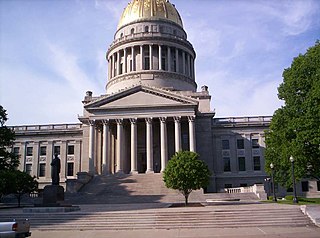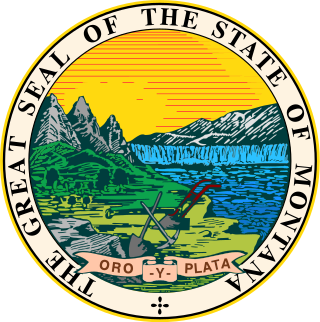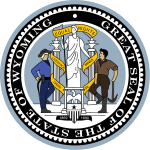
Elections in Georgia are held to fill various state and federal seats. Georgia regular elections are held every even year. The positions being decided each year varies, as the terms of office varies. The State Senate, State House and U.S. House will typically be up for election, as all of those positions have two-year terms. Special elections are held to fill vacated offices. Georgia is one of seven states that require a run-off election if no candidate receives a majority of the vote in a primary election. Uniquely, Georgia requires a run-off election for state and congressional offices if no candidate wins a majority of the vote in a general election; only Louisiana has a similar requirement, but it operates under a different election system.

From the time of the Great Depression through the 1990s, the politics of West Virginia were largely dominated by the Democratic Party. In the 2000 presidential election, George W. Bush claimed a surprise victory over Al Gore, with 52% of the vote; he won West Virginia again in 2004, with 56% of the vote. West Virginia is now a heavily Republican state, with John McCain winning the state in 2008, Mitt Romney in 2012 and Donald Trump in 2016 and 2020.

Elections in the U.S. state of New Hampshire are held at national, state and local level. The state holds the first presidential primary in the national cycle. Elections for a range of state positions coincide with biennial elections for the House of Representatives.

From 1836 to 1845, the Republic of Texas elected its own presidents. In 1845, it was admitted to the United States as the state of Texas, and has been a participant in every presidential election since, except for 1864 and 1868. Texas did not participate in these due to its secession from the United States to join the Confederate States of America on February 1, 1861, and its status as an unreconstructed state in 1868 following the American Civil War.

Elections in Oregon are all held using a Vote by Mail (VBM) system. This means that all registered voters receive their ballots via postal delivery and can vote from their homes. A state Voters’ Pamphlet is mailed to every household in Oregon about three weeks before each statewide election. It includes information about each measure and candidate in the upcoming election.

Elections in Michigan are held to fill various local, state and federal seats. Special elections may be held to fill vacancies at other points in time.

Elections in South Carolina are held to fill various local, state and federal seats. Special elections may be held to fill vacancies at other points in time.

The number of elections in Alaska varies by year, but typically municipal elections occur every year, plus primary and general elections for federal and state offices occur during even-numbered years. Alaska has a gubernatorial election every four years. Members of the state's United States congressional delegation run for election or re-election at the times set out in the United States Constitution. Primary elections assist in choosing political parties' nominees for various positions. On a regional basis, elections also cover municipal issues. In addition, a special election can occur at any time.

Elections in Wisconsin are held to fill various local, state and federal seats. Special elections may be held to fill vacancies at other points in time.

In Washington, elections are authorized by Articles II, III, and IV of the Washington State Constitution, which respectively include the establishment of elections for the legislative, executive, and judiciary branches of the state government; Article VI establishes election procedures and rights.

Elections in Pennsylvania elect the five state-level offices, the Pennsylvania General Assembly, including the senate and house of representatives, as well as the state's congressional delegation for the United States Senate and the United States House of Representatives. Presidential elections are held every four years in Pennsylvania. The state is one of the most competitive nationally, with narrow victories that alternate between the parties across all major offices. On the presidential level, the state has been considered a swing state throughout its entire history as it only voted for the nationwide loser on only 10 occasions. Meaning it has voted for the national winner 83% of the time, as of 2020.

Elections in Missouri are held to fill various local, state and federal seats. Special elections may be held to fill vacancies at other points in time.

Elections in Utah are held to fill various local, state, and federal seats. Special elections may be held to fill vacancies at other points in time.

Some type of election in Idaho occurs annually in each of the state's cities and towns, the exact type of which is dependent on the year. Elections for federal and statewide offices occur in even-numbered years, while municipal elections occur in odd-numbered years.

Montana became a territory May 28, 1864 and the first delegation created nine counties: Beaverhead, Big Horn, Chouteau, Deer Lodge, Gallatin, Jefferson, Edgerton, Madison, and Missoula. Montana became a state on November 8, 1889,

The following is a list of federal, state, and local elections in the U.S. state of Maryland and can refer to one of the following elections:

This is a list of past elections in the U.S. state of Tennessee. Tennessee's politics are currently dominated by the Republican Party. Republicans currently hold both of the state's U.S. Senate seats, a majority of Congressional seats, and the state legislature. Democratic strength is largely concentrated in Nashville, Memphis, and parts of Knoxville, Chattanooga, and Clarksville. Several sunburn areas of Nashville and Memphis also contain significant Democratic minorities. Tennessee is one of thirteen states which holds its presidential primaries on Super Tuesday. Tennessee does not require voters to declare a party affiliation when registering. The state is one of eight states which require voters to present a form of photo identification.

This is a list of elections in the U.S. state of Nevada. Nevada is a swing state in state and federal elections, with margins that typically are under five percent. Unique to the state is the "None of These Candidates" voting option for all statewide and presidential and vice-presidential election ballots. This option is listed along with the names of individuals running for the position and is often described as "none of the above". The option first appeared on the Nevada ballot in 1975.

This is a list of elections in the U.S. state of North Carolina.

Elections in the U.S. state of Kentucky are held regularly. Politics in Kentucky has historically been very competitive. The state leaned toward the Democratic Party during the 1860s after the Whig Party dissolved. During the Civil War, the southeastern part of the state aligned with the Union and tended to support Republican candidates thereafter, while the central and western portions remained heavily Democratic even into the following decades. Kentucky would be part of the Democratic Solid South until the mid-20th century.




















